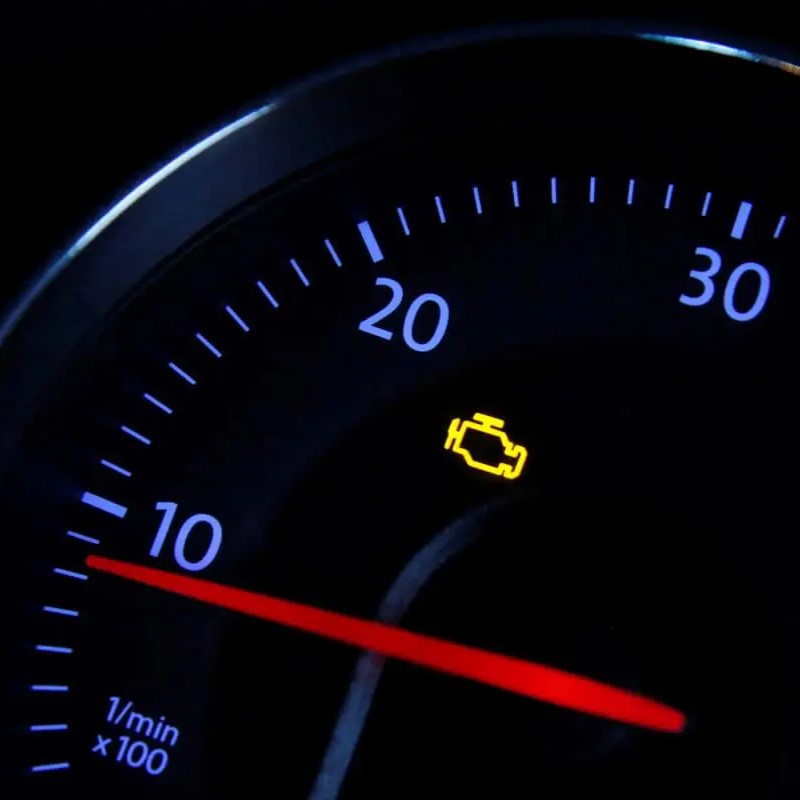Have you ever glanced at your dashboard and noticed a strange yellow light illuminated? If you drive a car manufactured after 2007 in the United States, it’s likely the Tire Pressure Monitoring System (TPMS) light. This little light plays a crucial role in ensuring your safety on the road. So, what exactly does it mean when your TPMS light comes on, and what should you do?
What is TPMS and Why is it Important?
In simpler terms, TPMS is a built-in system that constantly monitors the air pressure in your tires. Each tire has a sensor that transmits pressure data to a receiver in your car. If the pressure falls below a certain threshold, the TPMS light illuminates on your dashboard, alerting you to a potential problem.
But why is maintaining proper tire pressure such a big deal? Here’s why:
- Safety: Underinflated tires can lead to blowouts, which can cause loss of control and serious accidents. TPMS helps prevent this by prompting you to address low pressure before it becomes a safety hazard.
- Fuel Efficiency: Underinflated tires create more rolling resistance, meaning your engine has to work harder to keep the car moving. This translates to decreased fuel efficiency.
- Tire Wear: Uneven or improper tire pressure can cause uneven tread wear, leading to a shorter lifespan for your tires.
What Does the TPMS Light Mean?
There are two main scenarios you might encounter with your TPMS light:
Solid Illumination:
This is the most common scenario and signifies that at least one of your tires is underinflated. The recommended tire pressure for your specific car can be found in the owner’s manual or on a sticker located on the driver’s door jamb.
Flashing Illumination:
This typically indicates a malfunction with the TPMS system itself. It could be a faulty sensor, a damaged receiver, or a communication issue.
Taking Action: Checking Your Tire Pressure
The first step after noticing your TPMS light is to check your tire pressure. Here’s what you’ll need:
- Tire pressure gauge: You can purchase a reliable tire pressure gauge from most auto parts stores or gas stations for a few dollars.
- Owner’s manual: Refer to your manual to find the recommended tire pressure for your car.
Steps to Check Tire Pressure:
- Park your car on a level surface and ensure the tires are cool (not driven recently).
- Locate the valve stem on each tire. It’s the short rubber protrusion where air is added.
- Unscrew the valve cap and press the tire pressure gauge firmly onto the valve stem. You’ll hear a hissing sound as air escapes momentarily.
- Read the pressure reading on the gauge. Compare it to the recommended pressure in your owner’s manual.
- Repeat steps 3 and 4 for all four tires, including the spare (if applicable).
Addressing Low Tire Pressure
If you find a tire with low pressure, there are two options:
- Inflate the Tire Yourself: Most gas stations have air pumps available for customer use. Simply follow the instructions on the pump to inflate the tire to the recommended pressure.
- Visit a Service Station: If you’re uncomfortable inflating the tire yourself or don’t have access to an air pump, head to a gas station or tire service center. They can quickly inflate your tire and check for any leaks or damage.
Beyond Low Pressure: Other TPMS Light Triggers
While low pressure is the most common culprit for a TPMS light, there are a few other factors that can trigger it:
- Temperature Changes: Drastic fluctuations in temperature can cause slight variations in tire pressure. This might lead to a temporary TPMS light illumination, especially during seasonal transitions. Usually, the light will reset itself once the tire pressure stabilizes.
- Faulty TPMS Sensor: As mentioned earlier, a malfunctioning sensor can cause the TPMS light to flash. If the light remains illuminated after addressing low pressure or persists even after temperature changes, a faulty sensor might be the culprit.
- Dead Battery in Sensor: TPMS sensors use small batteries that have a lifespan of several years. A dead battery in a sensor can trigger the TPMS light.
When to Seek Professional Help
In most cases, checking and adjusting your tire pressure will resolve the TPMS light issue. However, if you encounter any of the following situations, it’s best to seek professional help:
- The TPMS light remains illuminated after inflating the tires to the recommended pressure.
- The TPMS light is flashing.
- You suspect a leak or damage in a tire.

Maintaining Your TPMS System
While the TPMS system is designed to be relatively maintenance-free, there are a few things you can do to ensure its optimal performance:
- Regular Tire Rotations: Regular tire rotations help distribute wear evenly and can also help identify any slow leaks that might not be immediately noticeable. During rotations, some mechanics may also check the TPMS sensors for proper function.
- Winter/Summer Tire Changes: If you switch between winter and summer tires, ensure the TPMS sensors are properly programmed for each set. Some newer cars have a system that automatically recognizes different sensor IDs, but it’s always a good practice to double-check.
- Consult Your Owner’s Manual: Your car’s manual might have specific instructions for resetting the TPMS light after inflation or service. Some systems reset automatically, while others might require a manual reset procedure.
Additional Tips for Optimal Tire Care
Taking care of your tires goes beyond just maintaining proper pressure. Here are some additional tips:
- Visual Inspection: Regularly inspect your tires for any signs of damage, such as cuts, bulges, or uneven tread wear.
- Alignment Checks: Proper wheel alignment ensures your tires wear evenly. Misalignment can cause premature wear and tear.
- Avoid Overinflation: While underinflation is a major concern, overinflation can also be detrimental. Always stick to the recommended pressure for your car.
Conclusion: A TPMS Light Isn’t a Nuisance, It’s a Safety Reminder
A TPMS light might seem like a minor annoyance, but it serves a vital purpose. By keeping your tires properly inflated, you’re not only ensuring your safety on the road but also maximizing fuel efficiency and tire lifespan. So, the next time your TPMS light comes on, don’t ignore it. Take a few minutes to check your tire pressure and address any issues promptly. By taking proactive care of your tires, you can enjoy a smoother, safer, and more economical driving experience.









